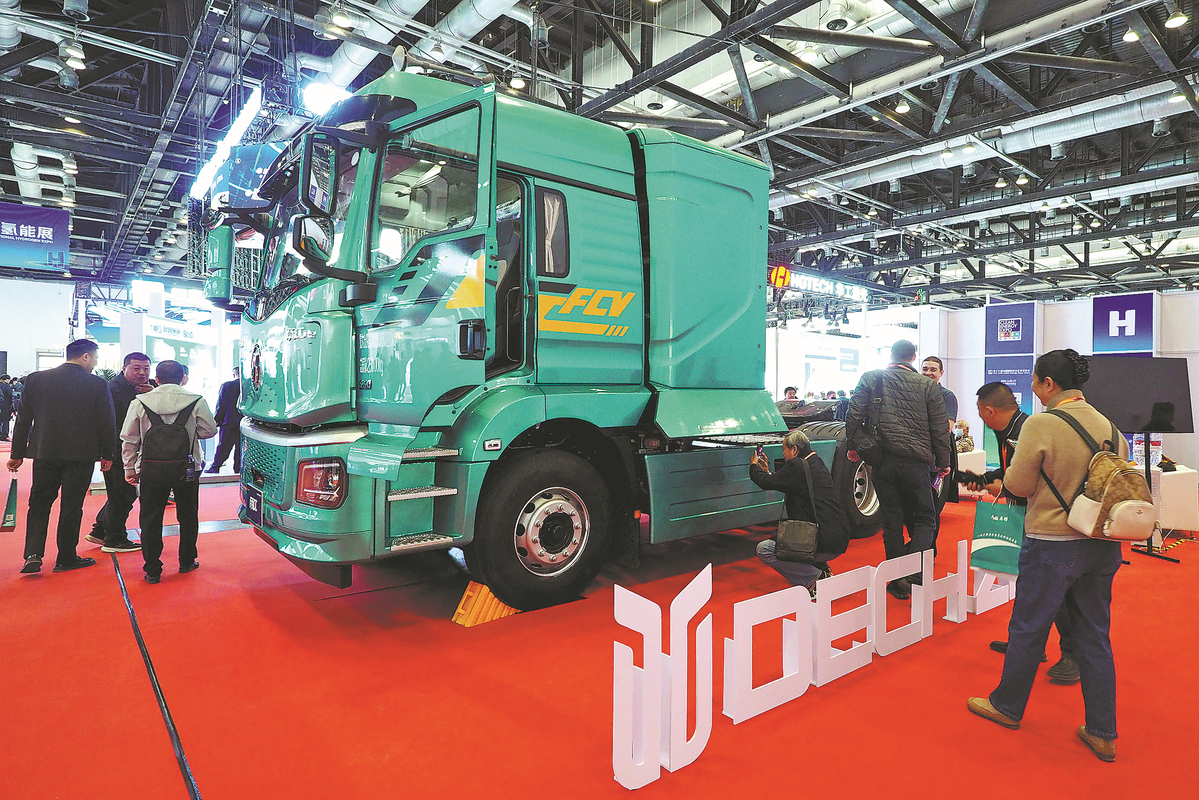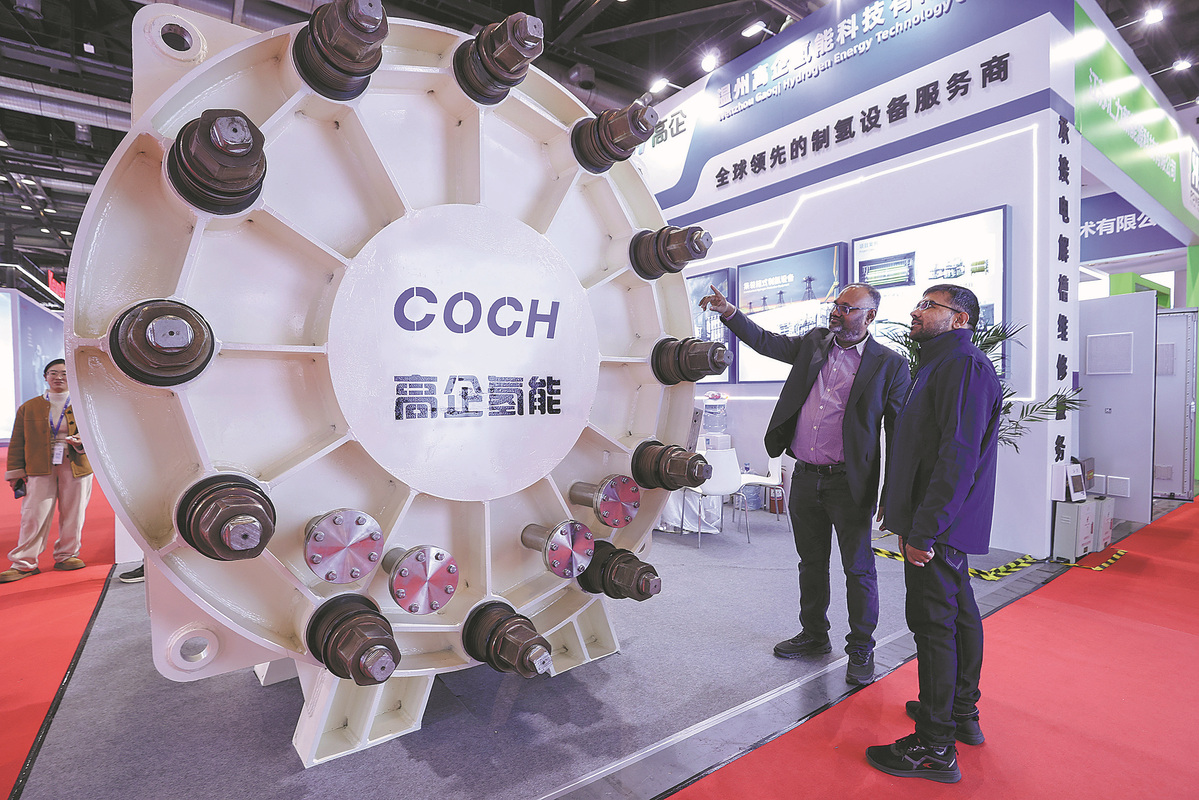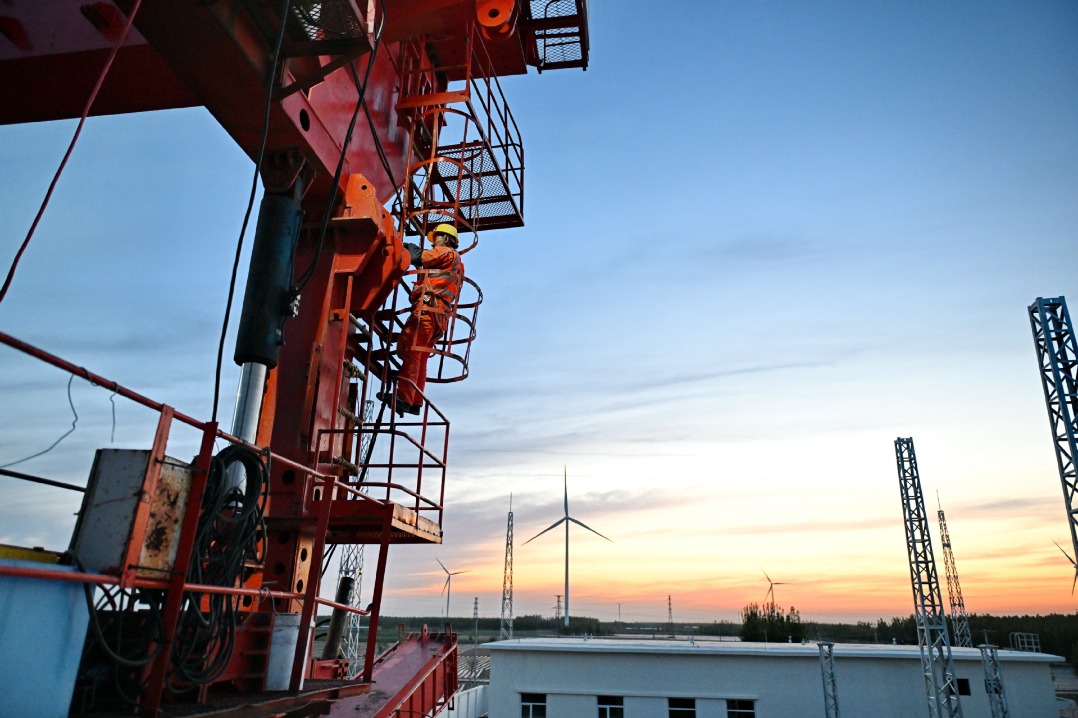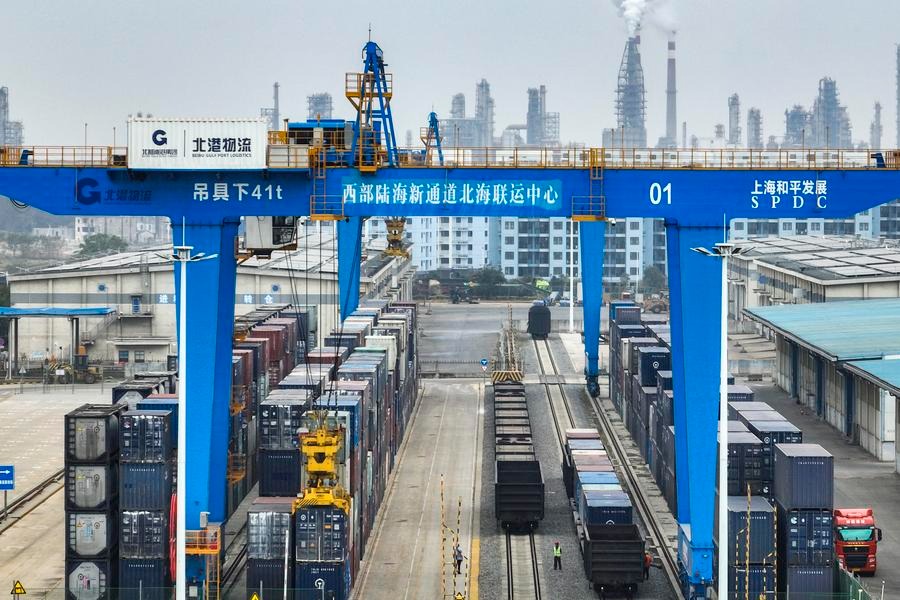China gears up for hydrogen's immense potential
Move to help rejig its energy mix but its development needs a more integrated approach


China's green hydrogen sector is on the cusp of rapid development, potentially blossoming into a 12 trillion yuan ($1.64 trillion) emerging industry as the country strategically prioritizes hydrogen as a cornerstone of its future energy system, according to industry experts and company executives.
Driven by ambitious decarbonization goals and strong government backing, hydrogen is projected to become a major component of China's end-use energy mix, complementing electricity and fostering a vast new industrial landscape, they say.
Analysts conservatively estimate hydrogen will account for approximately 10 percent of China's terminal energy system by 2050, rising to around 15 percent by 2060, solidifying its position as a crucial element in the nation's energy strategy.
This integration into the terminal energy system, working in tandem with electricity, is expected to transform hydrogen into a primary energy consumer, propelling the growth of a massive, multi-trillion yuan industry, said Gan Yong, an academician at the Chinese Academy of Engineering, during the China International Hydrogen Congress 2025 held in Beijing in March.
Infrastructure development is already accelerating. By June 2024, China had constructed 426 hydrogen refueling stations. The deployment of fuel cell vehicles is also gaining momentum, with cumulative adoption exceeding 20,000 vehicles by the end of last year and continuing to climb rapidly.
"In China, ambitious trajectories have been set under the hydrogen energy development plan for 2021-2035 as the country works toward its carbon peaking and neutrality goals," said James George, deputy resident representative of UNDP China.
"The national hydrogen strategy launched in 2021 has been key in adopting hydrogen and fuel cell technology, demonstrating the government's commitment to low-carbon development and clean energy," he said during the congress.
According to Gan from the Chinese Academy of Engineering, logistics-intensive port areas are particularly well-suited for establishing "diesel-to-hydrogen" demonstration zones, as hydrogen fuel cell vehicles are ideal for long-distance, heavy-load logistics, aligning perfectly with port operations.
He believes the adoption of hydrogen heavy-duty trucks in port demonstration zones could transform these pollution hotspots into clean energy showcases, significantly alleviating smog pressures.
"Ports, with their high cargo throughput and dense diesel vehicle usage, offer an ideal environment for centralized hydrogen refueling station deployment," he said.
"Large-scale hydrogen consumption at ports facilitates the economic viability of large refueling stations, potentially dispensing 5 metric tons of hydrogen daily and reducing operational costs. Furthermore, coastal port regions often have proximity to large steel and coking plants, ensuring a reliable and cost-effective supply of byproduct hydrogen," he said.
"Developed port transportation networks also simplify hydrogen delivery and enable the efficient planning of hydrogen pipeline infrastructure, further reducing supply costs and enhancing overall economic efficiency."
Scale efficiencies are also projected to bring the operating costs of hydrogen heavy-duty trucks in line with current diesel counterparts, Gan added.
His view is echoed by global consultancy Rystad Energy, which believes green hydrogen, together with solar, wind and biomass, will be crucial in China transforming from a coal-dependent giant into a leader in clean energy.
All these renewable technologies — including CCUS (carbon capture, utilization, and storage) and battery storage, could receive stronger financial and policy support to play bigger roles in China's energy outlook, said Deng Simeng, a senior analyst for renewables and power research at global consultancy Rystad Energy.

Deng believes it is significantly policy wise to expand the carbon market coverage from the current power sector to all other industries with high carbon intensity.
Opening up green power trading through electricity markets and green certificates would also be beneficial mechanisms, while boosting the electrification of end users could, in turn, increase power demand and scale up the renewable share of total energy consumption in China, she said.
As energy footprint of artificial intelligence expands exponentially, insiders believe hydrogen is shifting from an alternative fuel to a strategic imperative. Nations that invest in hydrogen infrastructure will be better positioned to capitalize on the AI-driven future, said industry experts.
According to Gan, burgeoning AI sector further underscores the importance of new energy sources like hydrogen, as the energy demands of AI are surging rapidly, creating a potential bottleneck for future growth.
Industry reports indicate that ChatGPT alone responds to approximately 200 million requests daily, consuming over 500,000 kilowatthours of electricity — equivalent to the average daily consumption of 17,000 US households.
Extrapolating this, annual operation could require 1.5 trillion kilowatt-hours, a substantial 16 percent of China's total electricity consumption in 2023.
The International Energy Agency projects that global data centers, AI, and cryptocurrency operations will consume around 1,000 terawatt-hours by 2026, equivalent to adding the total electricity consumption of a country like Sweden or Germany.
The explosive growth of AI is rapidly highlighting a critical energy challenge. Hydrogen, under the circumstance, is emerging not just as a clean energy source, but as a vital enabler for the continued advancement of artificial intelligence, said Gan.
China is already exploring diverse hydrogen applications.
In May 2021, the nation's first hydrogen-powered locomotive, launched by the Inner Mongolia subsidiary of the State Power Investment Corp Ltd, CRRC Datong Co Ltd and SPIC's Hydrogen Energy Co Ltd, began trial operations in Beijing, marking a significant step from research to application.
Hydrogen's role as a crucial energy storage medium is also emphasized, vital for supporting the large-scale deployment of renewable energy sources.
By the end of last year, China's installed photovoltaic capacity reached 886 million kilowatts, a 45 percent year-on-year increase. PV power now constitutes 24.8 percent of total installed capacity, surpassing wind and hydro to become China's second-largest power source.
In 2024 alone, China added 278 million kilowatts of new PV capacity, a 28 percent increase year-on-year, accounting for 64 percent of all new power installations. China's share of global new PV installations in 2024 exceeds 60 percent of the approximately 450 GW total.
Installed PV capacity in China is expected to surpass 1 billion kilowatts by the end of 2025 and 2 billion kilowatts by 2030. Hydrogen storage offers large-scale, long-duration capabilities, enabling the temporal and spatial transfer of renewable energy power, improving energy supply quality and renewable energy utilization, said Gan.
State-owned enterprises are actively participating in hydrogen development in recent years.
In the steel industry, SOEs are targeting the establishment of a comprehensive hydrogen utilization policy framework by 2025, with 10 major steel companies, including China Baowu Steel Group, expected to engage in hydrogen initiatives.
By 2030, the steel industry aims to have a largely complete hydrogen value chain, fostering approximately 20 competitive companies and building 50 refueling stations.
Breakthroughs are expected in low-carbon steelmaking technologies like hydrogen-based shaft furnaces and hydrogen-rich carbon cycle blast furnaces by 2030, with demonstration operations and scaled applications targeted by 2035 at leading steel companies.
The goal is to establish five national-level hydrogen utilization demonstration zones in the steel industry, achieving world-leading technological capabilities and innovation leadership in the hydrogen sector.
China Petroleum and Chemical Corp, also known as Sinopec, has been actively advancing its hydrogen energy infrastructure, having built 11 hydrogen fuel cell supply centers nationwide in addition to 142 hydrogen refueling stations across the country, integrating hydrogen production and refueling capabilities to promote the adoption of hydrogen energy.
Despite rapid progress, challenges remain, including the relatively high cost of electricity grid access and the lengthy planning and investment cycles for large-scale hydrogen storage and transportation infrastructure.
Some existing green hydrogen demonstration projects suffer from poor economics and low utilization rates due to a lack of comprehensive system planning, such as missing large-capacity pipelines, and focus only on vehicles and stations.
Gan recommends a more integrated approach, emphasizing the flexible interaction between hydrogen and electricity grids to enhance grid stability and reduce hydrogen production costs. He advises developers to thoroughly research market and engineering aspects to avoid rushed investments and unmet return expectations.
Zhong Baoshen, chairman of Longi Green Energy Technology Co Ltd — a key player in the photovoltaic sector — called for accelerated development of green hydrogen.
Generating green hydrogen from wind and solar sources offers a double advantage: it boosts energy efficiency and simultaneously strengthens the reliability of China's clean energy infrastructure, he said.
For China to effectively commercialize green hydrogen, Zhong argued for stronger policy backing focusing on practical and economic incentives, including developing large renewable energy complexes integrating wind, solar and hydrogen, as well as removing electricity transmission costs for green hydrogen.




































